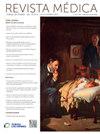低her2乳腺癌:靶向治疗的新时代
IF 0.4
Q4 MEDICINE, GENERAL & INTERNAL
引用次数: 0
摘要
乳腺癌是一种异质性疾病,超越了传统的临床病理分类。通过免疫组织化学识别低水平和超低水平的HER2表达,在以前被分类为HER2阴性的肿瘤中,导致了患者管理的范式转变。这种重新分类扩大了很大一部分患者的治疗选择,据估计,超过60%的激素受体阳性乳腺癌患者属于her2低类别。曲妥珠单抗德uxtecan是一种抗体-药物偶联物,已证明在晚期her2低乳腺癌患者中具有显着的生存益处,在大多数情况下,这些患者以前仅接受激素治疗后的化疗。然而,这种疗法也有毒性,特别是间质性肺病/肺炎,在某些情况下可能是严重的,甚至是致命的。这些毒性的早期发现及其跨学科管理对于优化这些患者的临床结果至关重要。本文概述了治疗低her2乳腺癌患者的最新进展,重点介绍了关键研究,并强调了严格监测新疗法相关毒性的重要性。本文章由计算机程序翻译,如有差异,请以英文原文为准。
Cáncer de mama HER2-bajo: una nueva era en terapias dirigidas
Breast cancer is a heterogeneous disease that goes beyond traditional clinicopathological classifications. Identifying low and ultra-low levels of HER2 expression through immunohistochemistry, in tumors previously classified as HER2-negative, has led to a paradigm shift in patient management. This reclassification has expanded therapeutic options for a significant proportion of patients, with estimates indicating that over 60% of patients with hormone receptor-positive breast cancers fall into the HER2-low category.
Trastuzumab deruxtecan, an antibody-drug conjugate, has demonstrated significant survival benefits in patients with advanced HER2-low breast cancer, who, in most cases, were previously candidates solely for chemotherapy following hormonal treatment. However, this therapy is not exempt from toxicity, notably interstitial lung disease/pneumonitis, which can be severe and even fatal in some instances. Early detection of these toxicities and their interdisciplinary management are crucial to optimize clinical outcomes in these patients.
This article provides an overview of recent advancements in treating patients with HER2-low breast cancer, highlighting pivotal studies and emphasizing the importance of stringent monitoring for toxicities associated with new therapies.
求助全文
通过发布文献求助,成功后即可免费获取论文全文。
去求助
来源期刊

Revista Medica Clinica Las Condes
MEDICINE, GENERAL & INTERNAL-
CiteScore
0.80
自引率
0.00%
发文量
65
审稿时长
81 days
 求助内容:
求助内容: 应助结果提醒方式:
应助结果提醒方式:


